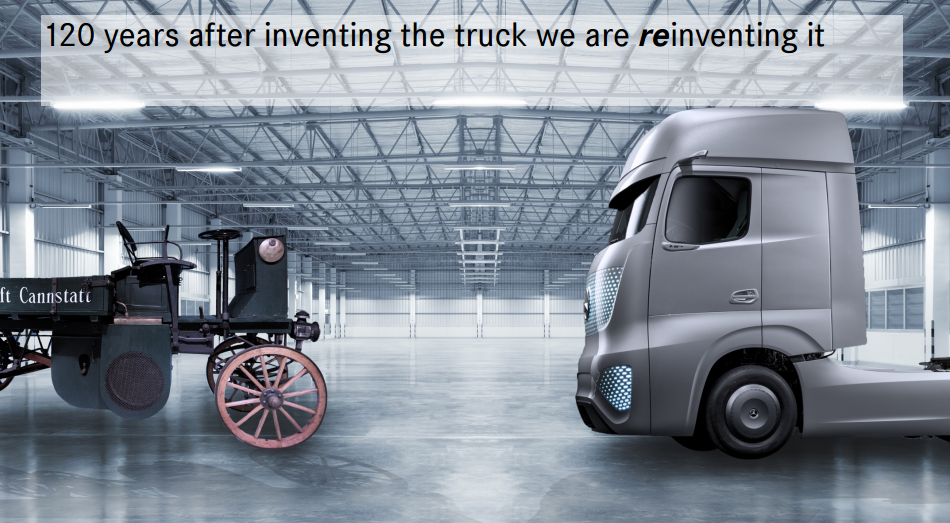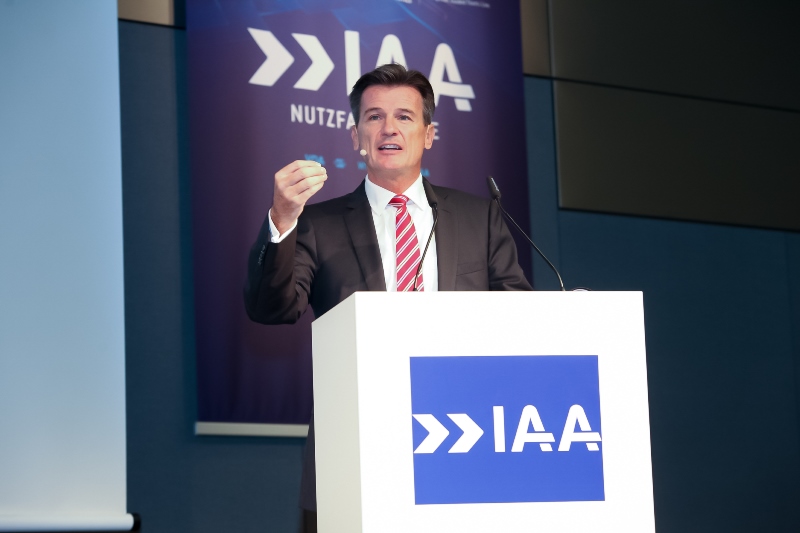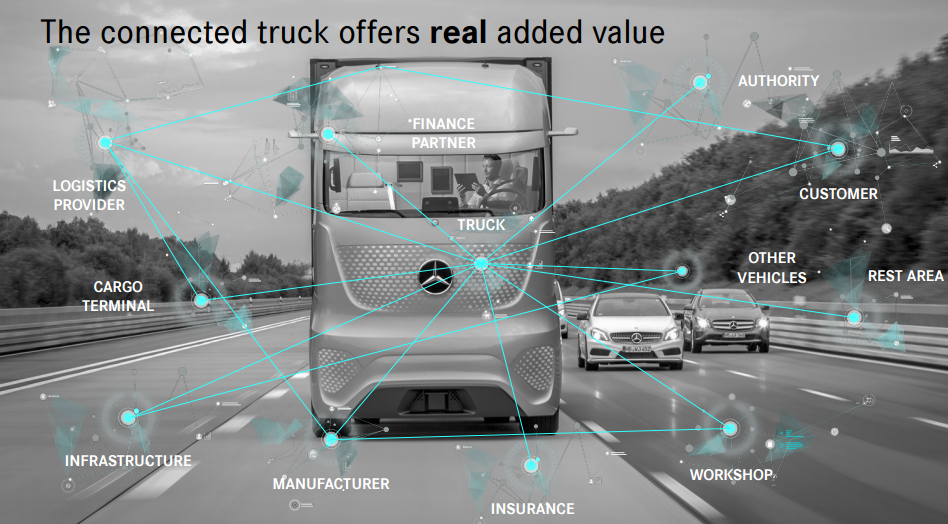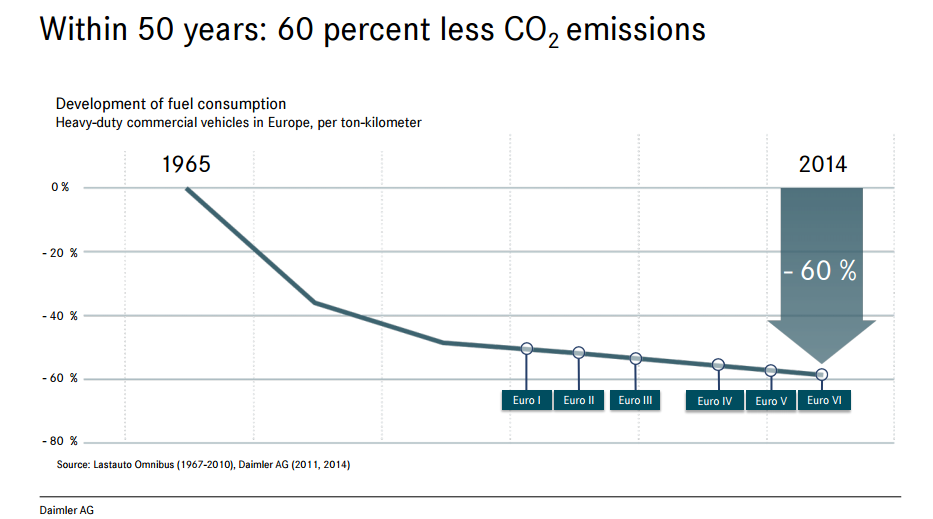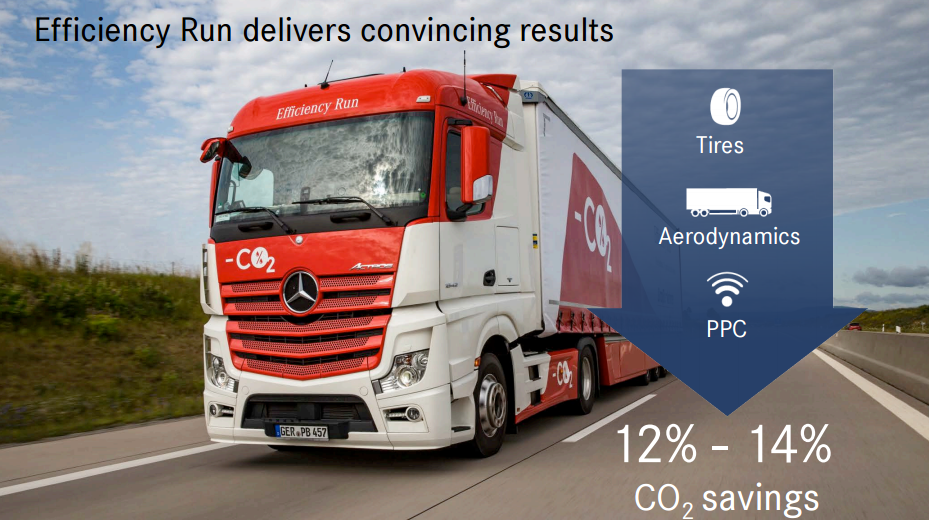Speech by Dr. Wolfgang Bernhard, Member of the Board of Management of Daimler AG, Daimler Trucks & Buses
There are just a few weeks for IAA 2016 in Hannover. It’s an important event that comes around every two years for our industry, but this year it’s especially important, because the commercial truck industry seldom faces such great challenges and opportunities as it does today.
So, above all there’s one thing I’d like to do, provide some clarity. I want to draw all attention to the key issues and establish positions on what we’ve already achieved and what we need to do next. What priorities should the truck industry and policy now set?
I’ll begin with the first technology revolution – Autonomous driving. I admit, at Daimler Trucks we’re more than a little proud that we’ve blazed the trail for this technology in trucks. We recognized early on that this technology is ideal for our industry. We developed the “Highway Pilot” self-driving feature and in 2014 with our Mercedes-Benz Future Truck, introduced the first-ever autonomous truck. This March, less than two years later, we put a platoon of autonomous trucks on the A52 Autobahn. We are absolutely convinced this technology has tremendous potential. In the meantime, so are others: A leading consulting firm recently stated in a study that autonomous driving could reduce the number of truck accidents by about 90 percent. In Silicon Valley the first start-ups have now discovered autonomous trucks. One tends to believe in principle that Silicon Valley spawns innovative ideas before the rest of the world. But in this case a brand new start up in San Francisco is behind 130-year old Daimler in Germany.
So, we have an advantage and therefore we need to keep up our fast pace. With both the technology and legal framework. We have to adapt our 20th Century regulations to the 21st Century and we can’t allow ourselves to get bogged down. Before we can answer every question about autonomous driving, we must first allow partially autonomous driving. We have to allow the driver to take his or her hands off the wheel. Last year at this time I called for politics to incorporate the revised Vienna Convention into German law. That has since happened and is a good start. Yet at a speed above ten km per hour the EU-directive ECE R79 still prohibits the driver to take his or her hands off the steering wheel. There is still no certification or regulation for autopilot function in a truck. Our industry has made valid arguments to change that. Otherwise partially autonomous trucks will be ready for the market, but not allowed on European roads.
That brings me to my second topic today, connectivity. We all know: Connectivity, industry 4.0 and the “internet of things” have become buzzwords. Everybody talks about them. Experts expect another 1.5 billion things will go online this year alone. So, 3,000 things are being added every minute. It’s open to discussion whether or not it makes sense to have a running shoe or toothbrush on the internet. But what is clear is this: A connected truck will bring real added value, first and foremost for our customers and drivers, for logistics system as a whole, the environment and for the society. We are yet to fully assess the extent of that value.
When we connect the truck to the cloud, it can exchange real-time information with all participants involved in transport, with freight companies and freight terminals, with the infrastructure and other vehicles, with truck manufacturers, repair facilities, and many others. The connected truck can also solve numerous problems faced by freight companies and drivers today, such as long wait times at loading and unloading stations, empty “deadhead” runs and traffic jams.
At Daimler Trucks we’re not new to connectivity. It has been incorporated in our strategy for many years. We want to move our industry forward and to do so we do not need billions of euros in subsidies. But there is one thing we need for connected trucks, a seamless mobile network along the Autobahn. This is not about a new “super network.” For most applications 3G is sufficient, for the rest LTE works fine. The problem is not the technology, but availability. One study recently showed that LTE coverage in Germany is no better than in Morocco. We should not need to require cellphone service providers to do something about it, because it’s in their own best interest to act. By doing so they don’t just make the truck industry happy. They would cheer up all drivers, their customers, who want good phone service.
Now to my third technology, electric mobility. There’s good news here. Electric drive in trucks has long not been a consideration. But things are starting to change, because battery technology is making great strides. From 1997 to 2025 battery costs are forecasted to drop by 60 percent. And during the same period battery performance is expected to improve by 250 percent. Granted, that’s never enough for long-haul transport. But the use of emission-free trucks for local distribution is conceivable just a few years out. That means we can noticeably improve the quality of life and we aim to do so. We’re running a pilot program with customers in Stuttgart using five electric trucks from our FUSO brand. It’s likely these trucks will be considered and subsidized under the new electric-mobility law. Of course, that would make us very happy. What also makes me happy in the realm of electric driving is that we will soon have more news for you. Let me summarize what has been said so far. Our industry is experiencing a revolution, spearheaded by autonomous driving, connected driving and electric driving. A revolution through which truck transport will become even more safe, efficient and clean which is good for the economy, society and environment.
I stress this because our industry is frequently blamed for doing too little for the environment. Some people even claim we didn’t do anything at all in the past 20 years. I state very clearly, that accusation is false and it does not become true by repetition. Many of you regularly test our trucks yourselves and know the facts. In the past 50 years our industry has reduced fuel consumption and CO2 emissions by 60 percent per ton km. We’ve reduced the fuel consumption of Mercedes-Benz Actros alone by 15 percent since 2011. At the same time we’ve reduced nitrous oxides by more than 80 percent and particulates by more than 50 percent. We rolled out both Euro V and Euro VI early, before those emission regulations were in effect by law.
These facts show very clearly that we have achieved a lot. Why? Quite simple, because there strong market forces working toward efficient trucks. Fuel consumption is a high cost factor for our customers and one of our best sales pitches to customers is best-in-class fuel efficiency. Among all manufacturers present today there is fierce competition to further improve the internal combustion engine. Competition for new drive technologies is equally fierce.
In a market-driven manner our industry has already done a lot for the environment and will do more. We’re making concrete proposals on how we can significantly reduce fuel consumption and CO2 emissions here and now. Namely, in a way that also aligns with market forces and demand. Therefore we would not add costs to the truck transport, increase consumer prices, or jeopardize the competitiveness of the European economy. I am talking about an integrated approach. The European truck industry introduced this concept in 2014. In essence, it’s about making use of all opportunities. We have to look at the entire truck system. If we want to reach the CO2 emission targets set by the EU, we must not solely focus on the tractor. This one lever is not enough. We need all seven levers that are available, tractor, trailer, tyres, fuel, operations, infrastructure and fleet renewal. At the time we estimated this would reduce C02 emissions by 20 percent by 2020.
At Daimler Trucks we’ve proven this integrated approach works in practice. In 2015 in our field test “Efficiency Run” we equipped a truck with the relevant components, low-rolling resistance tyres, aerodynamic attachments and predictive powertrain control. This fuel and CO2-emissions-optimized truck saved 12 to 14 percent. The long combination vehicle even achieved 17 percent. We’re continuing to build on that test right now. We want to put into practice what we tested in 2015, making it robust and affordable. At IAA we will show solutions our customers can actually order.
Regarding the long combination vehicle, the results of our Efficiency Run are so convincing that we should definitely implement them and take advantage of those efficiency gains. Regulations should allow for long combination vehicles across the EU and across borders. A long combination vehicle must be able to cover long distances. Only then can you realize its full benefit. An example: today one cannot drive a long combination vehicle from the Netherlands to Lower Saxony, although both of them allow it. I have to uncouple the vehicle ahead of the border. And one has to allocate the cargo to two vehicles. To do this, one also needs appropriate truck stops, ahead of the border but also behind the border for reassembling the long combination vehicle. It’s a waste of time and money. It’s absurd. It’s not at all the idea of a united Europe.
In conclusion, I’d like to briefly summarize my remarks. In truck transport we’ve achieved a great deal in the past years and decades. But we can still do a lot more if we’re tackling the right issues in the right ways. Specifically, that means we need to take an integrated approach. We must look at the overall truck system and take advantage of all the opportunities for more fuel efficiency there. Then we can immediately achieve a lot in fuel consumption and CO2 emission just think of long combination vehicles. In autonomous driving we can’t allow the U.S. to pass us. We have to keep up our pace, especially with our legal framework. The networked truck with its real-time data opens up completely new possibilities. To do so all we need is what any motorist already wants, seamless mobile phone reception. Electric and emission-free driving can be a reality in a few years, most certainly in our cities. But even that is not a foregone conclusion, it still needs pioneers.
As you can see, we can look forward to the truck of tomorrow. Even more so because Europe has the opportunity to be in a leading position. Let’s work towards that together!
